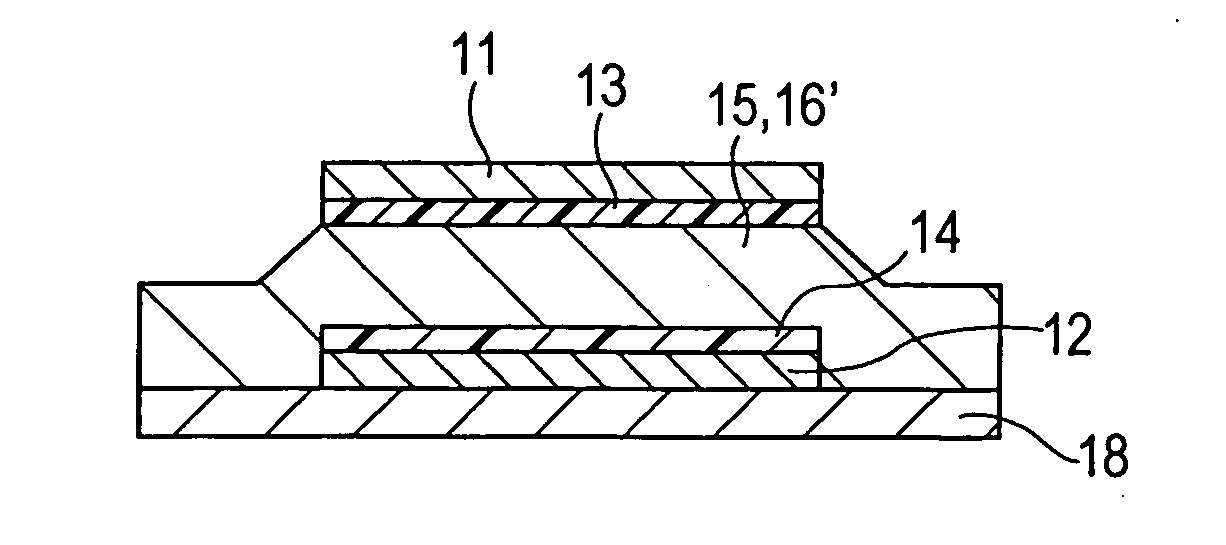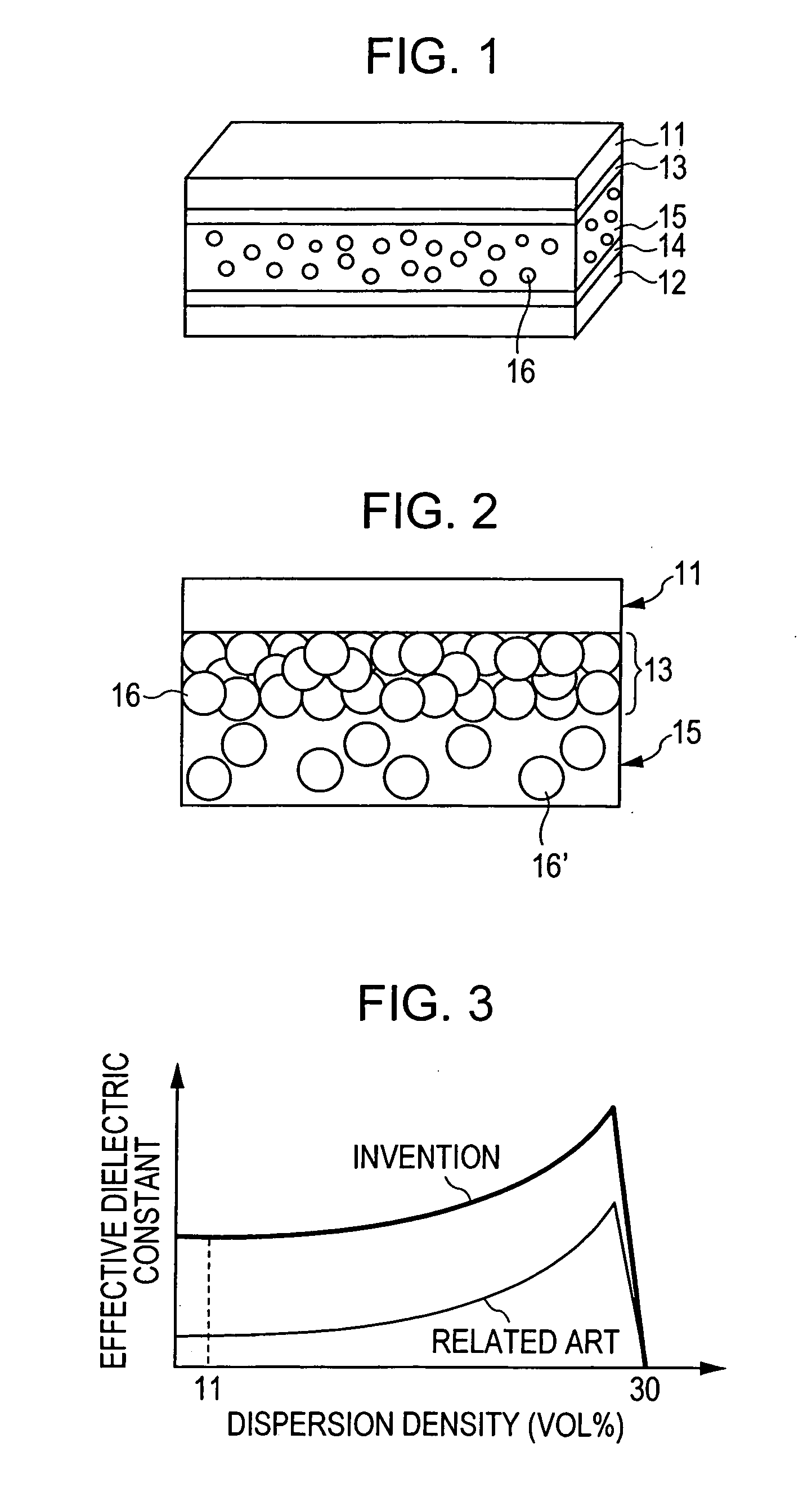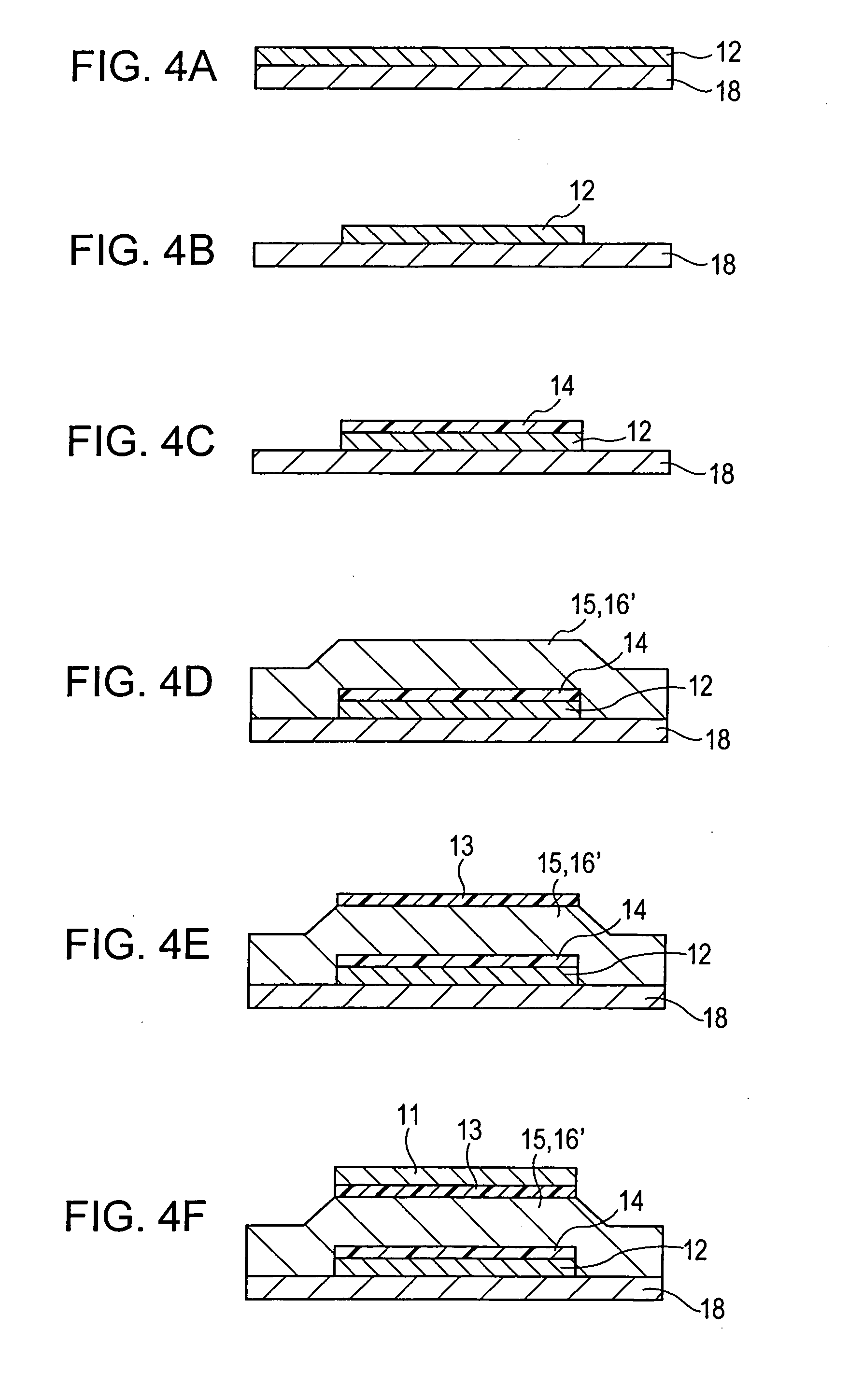Capacitor
- Summary
- Abstract
- Description
- Claims
- Application Information
AI Technical Summary
Benefits of technology
Problems solved by technology
Method used
Image
Examples
first embodiment
[0021]FIG. 1 shows a first embodiment of a capacitor of the present invention. The capacitor includes a pair of electrodes 11 and 12 having main surfaces opposing each other, pseudo electrode layers 13 and 14 disposed on the main surfaces of the electrodes 11 and 12, and a dielectric layer 15 interposed between the pseudo electrode layers 13 and 14. In this embodiment, both the electrodes 11 and 12 are provided with the pseudo electrode layers. Alternatively, a pseudo electrode layer may be provided to only one of the electrodes 11 and 12.
[0022] The electrodes 11 and 12 may be conventional electrodes for capacitor applications. The pseudo electrode layers 13 and 14 are arranged as shown in FIG. 2. The pseudo electrode layers 13 and 14 (only the pseudo electrode layer 13 is shown in FIG. 2) contain conductive particles 16 that electrically couple with the electrodes 11 and 12 (only the electrode 11 is shown in FIG. 2). In this pseudo electrode layer 13, the conductive particles 16 a...
second embodiment
[0037] In this embodiment, insulating particles are contained in the dielectric layer. FIG. 5 shows a capacitor according to a second embodiment of the present invention. In FIG. 5, the same components as those shown in FIG. 1 were represented by the same reference numerals, and the detailed description of these identical components are omitted to avoid redundancy.
[0038] The capacitor shown in FIG. 5 includes a dielectric layer 15 containing both conductive particles 16 and insulating particles 17. In this manner, the resistance of the capacitor against moisture absorption can be increased, and degradation of characteristics due to moisture absorption can be prevented. For example, when the dielectric layer 15 is composed of a polymeric material, it is possible that the polymer absorbs moisture, thereby adversely affecting the characteristics. By dispersing the insulating particles 17 into the dielectric layer 15, the percentage of the polymer can be decreased as the polymer is rep...
examples
[0041] Experiments described below were conducted to confirm the advantages of the present invention.
[0042] A capacitor having electrodes 11 and 12 composed of aluminum, pseudo electrode layers 13 and 14 composed of a polyimide resin (dielectric constant: 3.5) and silver particles (conductive particles 16) having an average diameter of about 0.1 μm (content: about 40 vol %), and a dielectric layer 15 composed of a polyimide resin, silver particles (conductive particles 16′) having an average particle diameter of about 0.1 μm (content: about 10 vol %) and alumina particles (insulating particles 17, dielectric constant: 9 to 10) having an average particle diameter of about 0.1 μm (content: about 40 vol %) was prepared as described above. The thickness of the dielectric layer 15 was 10 μm, and the electrode area was 100 μm×100 μm. The pseudo electrode layers 13 and 14 and the dielectric layer 15 were baked at about 150° C. for 10 minutes. The effective dielectric constant of this capa...
PUM
 Login to View More
Login to View More Abstract
Description
Claims
Application Information
 Login to View More
Login to View More - R&D
- Intellectual Property
- Life Sciences
- Materials
- Tech Scout
- Unparalleled Data Quality
- Higher Quality Content
- 60% Fewer Hallucinations
Browse by: Latest US Patents, China's latest patents, Technical Efficacy Thesaurus, Application Domain, Technology Topic, Popular Technical Reports.
© 2025 PatSnap. All rights reserved.Legal|Privacy policy|Modern Slavery Act Transparency Statement|Sitemap|About US| Contact US: help@patsnap.com



